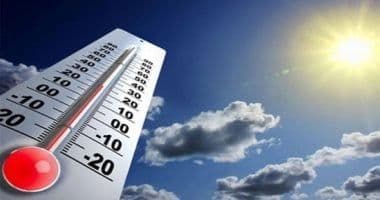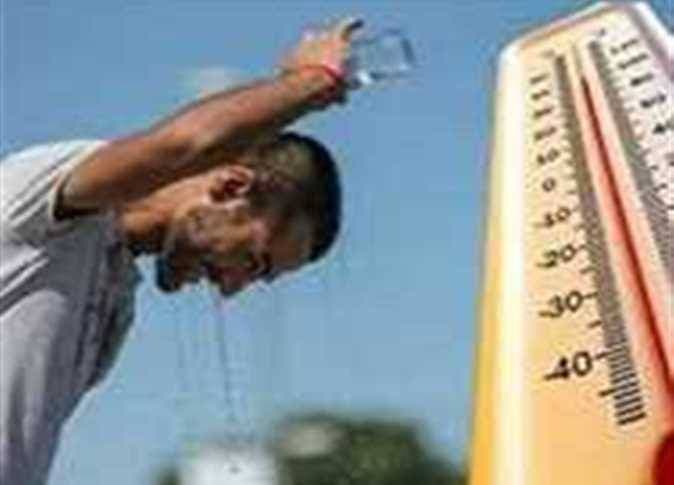The Invisible Inferno: Why Egypt's Heatwave Feels Hotter Than It Looks
Egypt's week-long heatwave intensifies. Uncover why humidity makes the 'feels like' temperature soar above official readings. Get practical survival tips for the scorching days ahead.

The Looming Heatwave: What to Expect
Egypt is bracing for a truly formidable heatwave, one that promises to be more challenging than typical summer swelters. According to , Director General of Forecasts and Early Warning at the , this isn't just about high temperatures; it's the insidious combination of heat and elevated humidity that will significantly amplify the discomfort. This intense period is set to commence with a gradual temperature rise today, Wednesday, and is projected to persist until the middle of next week, painting a significant portion of the country in a relentless, stifling warmth. The General Authority of Meteorology has issued a stark warning, indicating that most regions will experience severely hot and humid conditions during the day, with nights offering only a slight reprieve, remaining warm and equally humid. For residents of , the mercury is expected to hover between a scorching 39 to 40 degrees Celsius in the shade from Wednesday through Monday. This forecast sets the stage for what many will perceive as an 'invisible inferno,' where the actual numbers on the thermometer don't fully convey the oppressive reality on the ground.

Beyond the Thermometer: The Humidity Amplification Effect
While a temperature reading of 39 or 40 degrees Celsius might sound daunting on its own, it’s the accompanying humidity that truly transforms a hot day into an unbearable one. elaborates on this critical distinction, explaining that the elevated humidity levels are expected to make the 'felt' temperature — what our bodies actually perceive — an additional 2 to 4 degrees higher than the recorded shade temperature. Imagine a thermometer showing 40°C in ; thanks to the moisture-laden air, it will actually feel more like a suffocating 43°C. This phenomenon, often referred to as the 'heat index' or 'real feel,' is crucial because humidity impedes the body's natural cooling mechanism: sweat evaporation. When the air is already saturated with moisture, sweat can't evaporate as efficiently, trapping heat against the skin and making us feel much hotter and stickier than the dry-bulb temperature suggests. Understanding this amplification effect is key to appreciating the true severity of current heatwave and why it demands a more vigilant approach to personal well-being.
Regional Hotspots: Where the Sizzle Is Most Intense
As this formidable heatwave blankets , certain regions are predicted to bear the brunt of its intensity, experiencing temperatures that push the very limits of endurance. While anticipates maximums around 39°C, and coastal cities like and will see comparatively milder highs of 34°C and 32°C respectively, the real sizzle is reserved for . Provinces in the south, such as , , and , are forecast to regularly hit staggering highs of 41°C and 42°C. specifically highlighted that the highest temperatures during this period are expected in the governorates of South Upper Egypt, where the mercury could reach an astonishing 45°C in the shade. When factoring in the humidity amplification effect discussed previously, these already extreme figures translate into truly dangerous 'feels like' temperatures, making outdoor activity not just uncomfortable but potentially hazardous. Residents in these southern hotspots, accustomed to intense summer heat, will still find this particular wave exceptionally challenging due to the added burden of high humidity.
Staying Cool: Essential Survival Strategies
Navigating a heatwave amplified by high humidity requires more than just common sense; it demands proactive and strategic measures to safeguard health. Given the 'invisible inferno' described by meteorologists, with felt temperatures significantly exceeding actual readings, staying hydrated is paramount. Drink plenty of water throughout the day, even if you don't feel thirsty, and avoid sugary drinks, alcohol, and excessive caffeine, which can lead to dehydration. It's also wise to limit outdoor activities, especially during peak heat hours, typically from noon to late afternoon. If you must venture out, seek shade whenever possible and wear lightweight, loose-fitting, and light-colored clothing. Taking cool showers or baths can offer temporary relief, and utilizing air conditioning or fans indoors is highly recommended. Pay close attention to vulnerable populations, such as children, the elderly, and those with pre-existing health conditions, as they are particularly susceptible to heat-related illnesses. Recognizing symptoms of heat exhaustion or heatstroke early – like dizziness, nausea, confusion, or a rapid pulse – can be life-saving. Don't hesitate to seek medical attention if symptoms worsen. Staying informed about weather updates and adapting daily routines will be crucial for weathering this challenging period.
Related Articles

The Invisible Inferno: Unpacking Egypt's Unprecedented Heatwave

The Invisible Inferno: Unpacking Egypt's Unprecedented Heatwave

Decoding Tomorrow's Swelter: Proactive Steps for an Intense Summer

Decoding Tomorrow's Swelter: Proactive Steps for an Intense Summer

Decoding Tomorrow's Discomfort: Egypt's Humid Heat Explained

Decoding Tomorrow's Discomfort: Egypt's Humid Heat Explained

The Hidden Heat: Unmasking Egypt's Humid Summer and Adapting to the 'Felt' Reality
